-
 Bitcoin
Bitcoin $83,622.6306
-1.03% -
 Ethereum
Ethereum $1,589.6945
-1.99% -
 Tether USDt
Tether USDt $1.0000
0.01% -
 XRP
XRP $2.0889
-1.88% -
 BNB
BNB $580.0353
-0.85% -
 Solana
Solana $126.7178
-2.33% -
 USDC
USDC $1.0000
-0.01% -
 TRON
TRON $0.2506
-0.43% -
 Dogecoin
Dogecoin $0.1537
-3.31% -
 Cardano
Cardano $0.6091
-4.20% -
 UNUS SED LEO
UNUS SED LEO $9.3201
-0.87% -
 Chainlink
Chainlink $12.2503
-3.06% -
 Avalanche
Avalanche $19.0105
-5.53% -
 Stellar
Stellar $0.2359
-1.88% -
 Toncoin
Toncoin $2.8505
-1.13% -
 Shiba Inu
Shiba Inu $0.0...01170
-2.63% -
 Sui
Sui $2.0950
-4.30% -
 Hedera
Hedera $0.1569
-4.99% -
 Bitcoin Cash
Bitcoin Cash $319.8208
-1.32% -
 Litecoin
Litecoin $75.7238
-2.04% -
 Polkadot
Polkadot $3.5266
-3.99% -
 Dai
Dai $1.0001
0.01% -
 Bitget Token
Bitget Token $4.2562
-1.04% -
 Hyperliquid
Hyperliquid $15.1159
-4.03% -
 Ethena USDe
Ethena USDe $0.9992
0.01% -
 Pi
Pi $0.6455
-12.89% -
 Monero
Monero $215.1633
0.19% -
 Uniswap
Uniswap $5.1866
-3.08% -
 OKB
OKB $51.9360
-0.45% -
 Pepe
Pepe $0.0...06972
-4.89%
What is merge mining?
Merge mining allows miners to mine multiple blockchains simultaneously, boosting security for smaller chains like Namecoin and Dogecoin by leveraging larger networks like Bitcoin and Litecoin.
Apr 08, 2025 at 04:00 pm
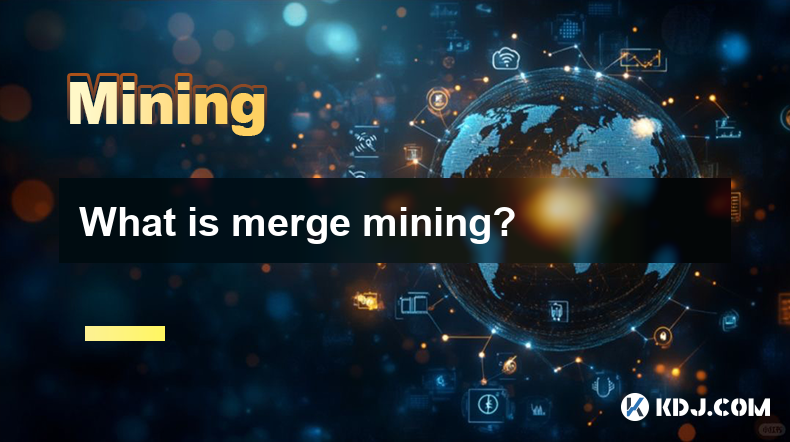
What is Merge Mining?
Merge mining is a process that allows miners to mine more than one blockchain simultaneously, using the same computational power. This technique is particularly useful for smaller cryptocurrencies that want to leverage the security and hash power of a larger, more established network. By merge mining, these smaller chains can benefit from the same level of security without requiring their own dedicated mining infrastructure.
How Does Merge Mining Work?
At its core, merge mining involves a parent blockchain and one or more child blockchains. The parent blockchain is typically a well-established network with significant hash power, such as Bitcoin. The child blockchains are the smaller networks that want to benefit from the parent's security.
In merge mining, miners solve the cryptographic puzzle for the parent blockchain, and in doing so, they can also include a reference to a block on the child blockchain. This reference, known as an auxiliary proof-of-work (AuxPoW), allows the child blockchain to accept the work done on the parent blockchain as valid proof-of-work for its own network.
Benefits of Merge Mining
Merge mining offers several advantages for both miners and the child blockchains. For miners, it allows them to increase their potential rewards without needing additional hardware or energy. By mining multiple chains at once, they can earn rewards from both the parent and child blockchains.
For the child blockchains, merge mining provides a significant boost in security. By tapping into the hash power of a larger network, these smaller chains can protect themselves against 51% attacks and other malicious activities. This increased security can also help build trust and attract more users to the child blockchain.
Examples of Merge Mining
One of the most well-known examples of merge mining is the relationship between Bitcoin and Namecoin. Namecoin, a blockchain designed for decentralized domain name registration, uses merge mining with Bitcoin. Miners can mine both Bitcoin and Namecoin simultaneously, using the same hash power.
Another example is the merge mining of Litecoin with Dogecoin. Litecoin, a popular alternative to Bitcoin, has been merge mined with Dogecoin, a cryptocurrency known for its community and meme culture. This relationship allows Dogecoin to benefit from Litecoin's established mining network.
Setting Up Merge Mining
To set up merge mining, miners need to configure their mining software to support multiple blockchains. Here's a step-by-step guide on how to set up merge mining for Bitcoin and Namecoin:
- Choose a Mining Software: Select a mining software that supports merge mining, such as EasyMiner or MultiMiner.
- Download and Install: Download the chosen software and follow the installation instructions.
- Configure Bitcoin Mining: Set up your Bitcoin mining configuration within the software, including your Bitcoin wallet address and mining pool details.
- Add Namecoin Configuration: Add the Namecoin configuration to the software. This typically involves specifying your Namecoin wallet address and the Namecoin mining pool details.
- Enable Merge Mining: Enable the merge mining feature in the software settings. This will allow the software to mine both Bitcoin and Namecoin simultaneously.
- Start Mining: Once everything is configured, start the mining process. The software will now work on solving the cryptographic puzzles for both Bitcoin and Namecoin.
Challenges and Considerations
While merge mining offers many benefits, it also comes with some challenges and considerations. One potential issue is the dependency on the parent blockchain. If the parent blockchain experiences a significant drop in hash power or security, it could negatively impact the child blockchains as well.
Another consideration is the potential for centralization. If a small number of miners control a large portion of the hash power on the parent blockchain, they could potentially influence the child blockchains as well. This could lead to concerns about the decentralization and security of the child networks.
Frequently Asked Questions
Q: Can any blockchain be merge mined with Bitcoin?
A: Not all blockchains can be merge mined with Bitcoin. The child blockchain must be compatible with Bitcoin's mining algorithm and support the necessary protocols for merge mining. Additionally, the child blockchain's developers must implement the necessary changes to allow for merge mining.
Q: Does merge mining affect the block reward of the parent blockchain?
A: Merge mining does not directly affect the block reward of the parent blockchain. Miners still receive the same block reward for solving the cryptographic puzzle on the parent blockchain. However, they can earn additional rewards from the child blockchains they are merge mining.
Q: Is merge mining legal?
A: Merge mining is a legal practice in the cryptocurrency space. It is a recognized method for mining multiple blockchains and is supported by various mining software and protocols. However, miners should always ensure they are complying with local regulations and the rules of the blockchains they are mining.
Q: Can merge mining be used with proof-of-stake blockchains?
A: Merge mining is typically associated with proof-of-work blockchains, as it relies on the computational power used to solve cryptographic puzzles. Proof-of-stake blockchains, which use a different consensus mechanism based on staking, do not typically support merge mining. However, some hybrid models that combine elements of proof-of-work and proof-of-stake may explore similar concepts.
Disclaimer:info@kdj.com
The information provided is not trading advice. kdj.com does not assume any responsibility for any investments made based on the information provided in this article. Cryptocurrencies are highly volatile and it is highly recommended that you invest with caution after thorough research!
If you believe that the content used on this website infringes your copyright, please contact us immediately (info@kdj.com) and we will delete it promptly.
- The Solana (SOL) Community Is Watching as the World's First Spot Solana ETFs Prepare to Launch in Canada Tomorrow
- 2025-04-16 08:15:12
- The New York LandRush Has Begun
- 2025-04-16 08:15:12
- Looking for the Best New Crypto to Buy Right Now? Forget the Hype
- 2025-04-16 08:10:14
- Dogecoin (DOGE) Shows Signs of Strength After Weeks of Volatility, Targeting $0.17 Resistance
- 2025-04-16 08:10:14
- Is the dip in Shiba Inu (SHIB) and PI coin price just noise—or a signal?
- 2025-04-16 08:10:13
- The 4 Best Long-Term Crypto Investments in 2025
- 2025-04-16 08:10:13
Related knowledge
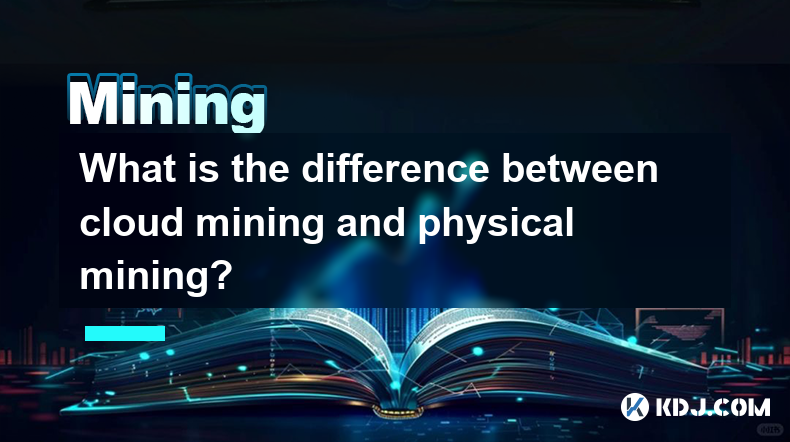
What is the difference between cloud mining and physical mining?
Apr 16,2025 at 01:49am
What is the difference between cloud mining and physical mining? In the world of cryptocurrencies, mining is the process by which new coins are generated and transactions are verified and added to the blockchain. There are two primary methods of mining: cloud mining and physical mining. Understanding the differences between these two approaches can help...
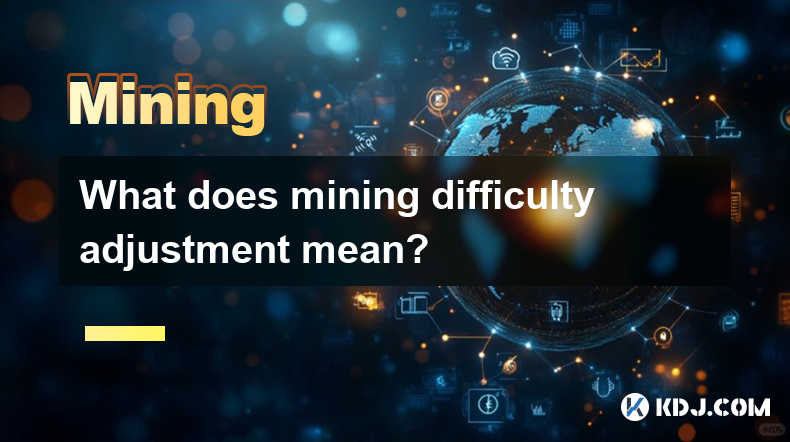
What does mining difficulty adjustment mean?
Apr 16,2025 at 12:42am
What does mining difficulty adjustment mean? Mining difficulty adjustment is a crucial mechanism in blockchain networks, particularly in Proof of Work (PoW) systems like Bitcoin. It ensures that the rate at which new blocks are added to the blockchain remains consistent, despite fluctuations in the total computational power (hash rate) of the network. T...
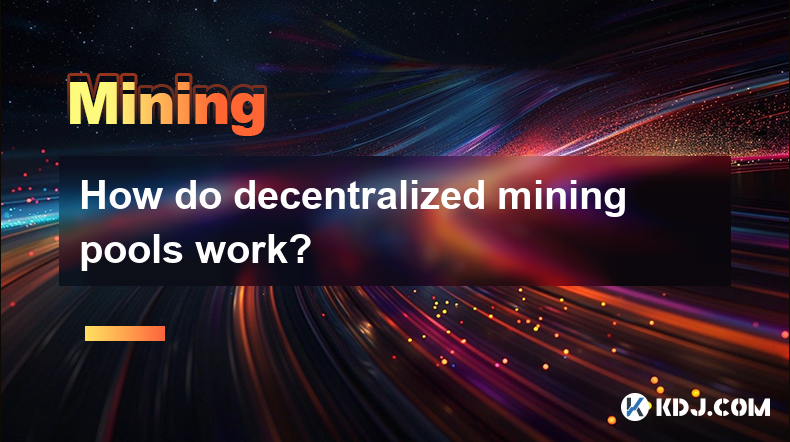
How do decentralized mining pools work?
Apr 16,2025 at 05:42am
Decentralized mining pools represent a significant evolution in the world of cryptocurrency mining, offering a more democratic and transparent approach compared to traditional centralized pools. In this article, we will explore the mechanics of decentralized mining pools, their benefits, and how they operate within the cryptocurrency ecosystem. What are...
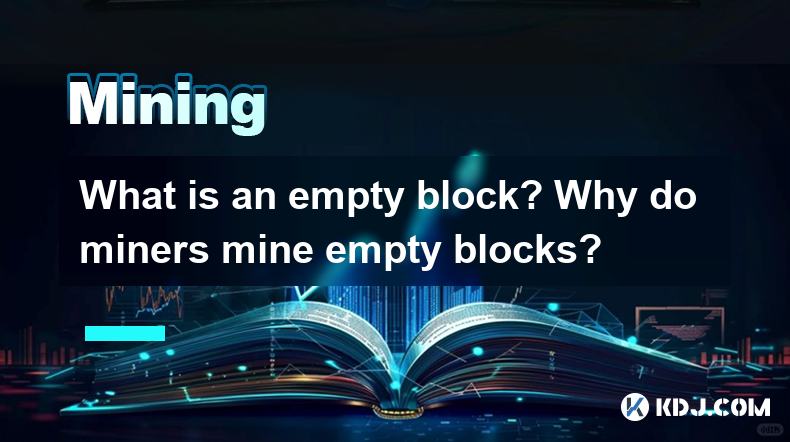
What is an empty block? Why do miners mine empty blocks?
Apr 16,2025 at 01:28am
What is an Empty Block?An empty block in the context of blockchain technology, particularly in cryptocurrencies like Bitcoin, refers to a block that contains no transactions other than the coinbase transaction. The coinbase transaction is a special transaction in which new bitcoins are generated and awarded to the miner who successfully mines the block....

What is the KawPow algorithm?
Apr 16,2025 at 06:43am
The KawPow algorithm is a proof-of-work (PoW) consensus mechanism specifically designed for the Ravencoin blockchain. It evolved from the earlier X16R and X16RV2 algorithms, aiming to enhance the security and efficiency of the mining process. KawPow was introduced to address the issues associated with ASIC (Application-Specific Integrated Circuit) miner...
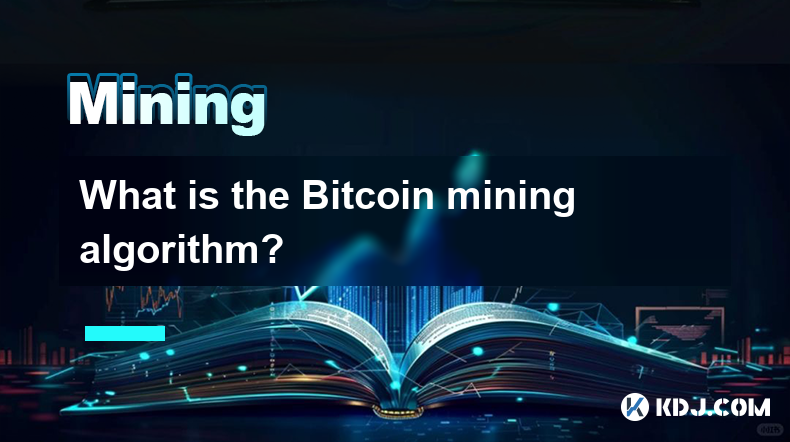
What is the Bitcoin mining algorithm?
Apr 15,2025 at 08:00pm
What is the Bitcoin Mining Algorithm? Bitcoin mining is a crucial process that maintains the integrity and security of the Bitcoin network. At the heart of this process lies the Bitcoin mining algorithm, which is responsible for verifying transactions and adding them to the blockchain. Understanding this algorithm is essential for anyone interested in t...

What is the difference between cloud mining and physical mining?
Apr 16,2025 at 01:49am
What is the difference between cloud mining and physical mining? In the world of cryptocurrencies, mining is the process by which new coins are generated and transactions are verified and added to the blockchain. There are two primary methods of mining: cloud mining and physical mining. Understanding the differences between these two approaches can help...

What does mining difficulty adjustment mean?
Apr 16,2025 at 12:42am
What does mining difficulty adjustment mean? Mining difficulty adjustment is a crucial mechanism in blockchain networks, particularly in Proof of Work (PoW) systems like Bitcoin. It ensures that the rate at which new blocks are added to the blockchain remains consistent, despite fluctuations in the total computational power (hash rate) of the network. T...

How do decentralized mining pools work?
Apr 16,2025 at 05:42am
Decentralized mining pools represent a significant evolution in the world of cryptocurrency mining, offering a more democratic and transparent approach compared to traditional centralized pools. In this article, we will explore the mechanics of decentralized mining pools, their benefits, and how they operate within the cryptocurrency ecosystem. What are...

What is an empty block? Why do miners mine empty blocks?
Apr 16,2025 at 01:28am
What is an Empty Block?An empty block in the context of blockchain technology, particularly in cryptocurrencies like Bitcoin, refers to a block that contains no transactions other than the coinbase transaction. The coinbase transaction is a special transaction in which new bitcoins are generated and awarded to the miner who successfully mines the block....

What is the KawPow algorithm?
Apr 16,2025 at 06:43am
The KawPow algorithm is a proof-of-work (PoW) consensus mechanism specifically designed for the Ravencoin blockchain. It evolved from the earlier X16R and X16RV2 algorithms, aiming to enhance the security and efficiency of the mining process. KawPow was introduced to address the issues associated with ASIC (Application-Specific Integrated Circuit) miner...

What is the Bitcoin mining algorithm?
Apr 15,2025 at 08:00pm
What is the Bitcoin Mining Algorithm? Bitcoin mining is a crucial process that maintains the integrity and security of the Bitcoin network. At the heart of this process lies the Bitcoin mining algorithm, which is responsible for verifying transactions and adding them to the blockchain. Understanding this algorithm is essential for anyone interested in t...
See all articles























































































